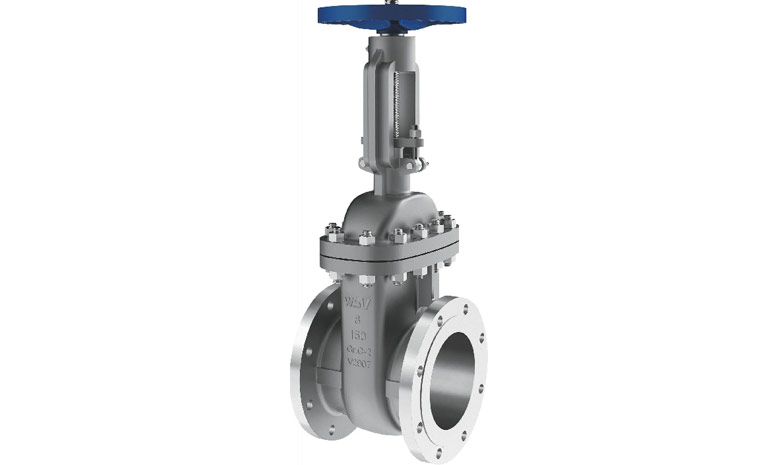Under normal circumstances, industrial valves are not subject to strength tests when they are in use, but strength tests should be performed on valve bodies and bonnets after repairs or corrosion-damaged valve bodies and bonnets. For the safety valve, its constant pressure, reseating pressure and other tests shall comply with the specifications of its instructions and relevant regulations. Before the valve is installed, the valve strength test and valve sealing test should be carried out on the valve hydraulic test bench. 20% of the low-pressure valves are spot-checked, and 100% of them should be checked if they are unqualified; 100% of the medium and high-pressure valves should be checked. The commonly used media for pressure testing of valves are water, oil, air, steam, nitrogen, etc. The pressure testing methods of various industrial valves including pneumatic valves are as follows.
For the strength test of globe control valve and throttle valve, usually put the assembled valve in the pressure test frame, open the valve disc, inject medium to the specified value, and check whether the valve body and valve cover are sweating and leaking. The strength test can also be carried out on a single piece. The tightness test is only for the globe control valve. During the test, the valve stem of the stop valve is in a vertical state, the valve disc is opened, and the medium is introduced from the lower end of the valve disc to the specified value, and the packing and gasket are checked; after passing the test, the valve disc is closed, and the other end is opened to check for leakage. If the strength and sealing test of the valve is to be done, the strength test can be done first, and then the pressure is reduced to the specified value of the sealing test, and the packing and gasket are checked; then the valve disc is closed, and the outlet port is opened to check whether the sealing surface is leaking.
The strength test of the gate valve is the same as that of the globe control valve. There are two methods for the sealing test of gate valves.

(1) Open the gate to raise the pressure in the valve to the specified value; then close the gate, take out the gate valve immediately, check whether there is leakage at the seals on both sides of the gate or directly inject the test medium into the plug on the valve cover to The specified value, check the seals on both sides of the gate. The above method is called intermediate pressure test. This method is not suitable for sealing tests on gate valves with nominal diameters below DN32mm.
(2) Another method is to open the gate to raise the test pressure of the valve to the specified value; then close the gate, open one end of the blind plate, and check whether the sealing surface is leaking. Then turn the head down and repeat the above test until it is qualified. The sealing test of the pneumatic gate valve packing and gasket should be carried out before the gate sealing test.
The strength test of the pneumatic ball valve should be carried out in the half-open state of the ball valve.
(1) Floating ball valve tightness test: put the valve in a half-open state, introduce the test medium at one end, and close the other end; rotate the ball several times, open the closed end to check when the valve is in the closed state, and check the seal at the packing and gasket at the same time performance, there must be no leakage. Then introduce the test medium from the other end and repeat the above test.
(2) Sealing test of fixed ball valve: before the test, rotate the ball several times without load, and the fixed ball valve is in the closed state, and introduce the test medium from one end to the specified value; check the sealing performance of the introduction end with a pressure gauge, and use the pressure gauge accuracy 0.5~1 level, the measuring range is 1.6 times of the test pressure. If there is no depressurization phenomenon within the specified time, it is qualified; then introduce the test medium from the other end, and repeat the above test. Then, the valve is in a half-open state, both ends are closed, and the inner cavity is filled with medium. Check the packing and gasket under the test pressure, and there must be no leakage.
(3) The three-way ball valve should be tested for tightness at each position.
The strength test of the pneumatic butterfly valve is the same as that of the globe control valve. The sealing performance test of the butterfly valve should introduce the test medium from the medium inflow end, the butterfly plate should be opened, the other end should be closed, and the injection pressure should reach the specified value; after checking that there is no leakage at the packing and other seals, close the butterfly plate, open the other end, and check the butterfly plate It is qualified if there is no leakage at the seal. Butterfly valves used to regulate flow may not be tested for sealing performance.
Test status of the check valve: the disc axis of the lift check valve is in a position perpendicular to the horizontal; the channel axis and disc axis of the swing check valve are in a position approximately parallel to the horizontal line. During the strength test, the test medium is introduced from the inlet end to the specified value, and the other end is closed, and it is qualified to see that there is no leakage from the valve body and bonnet. In the tightness test, the test medium is introduced from the outlet end, and the sealing surface is checked at the inlet end. If there is no leakage at the packing and gasket, it is qualified.